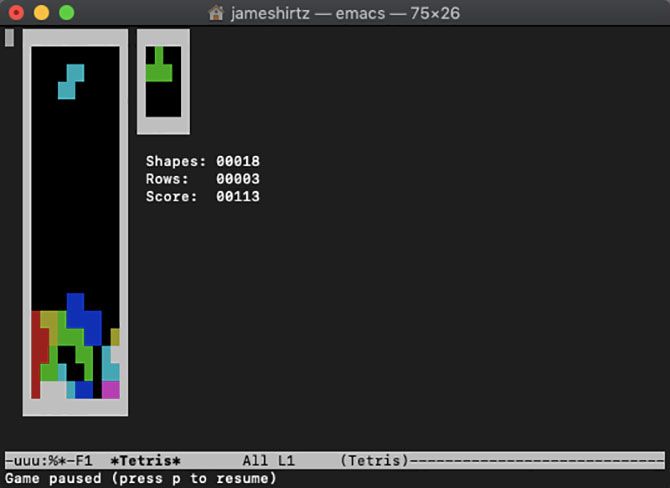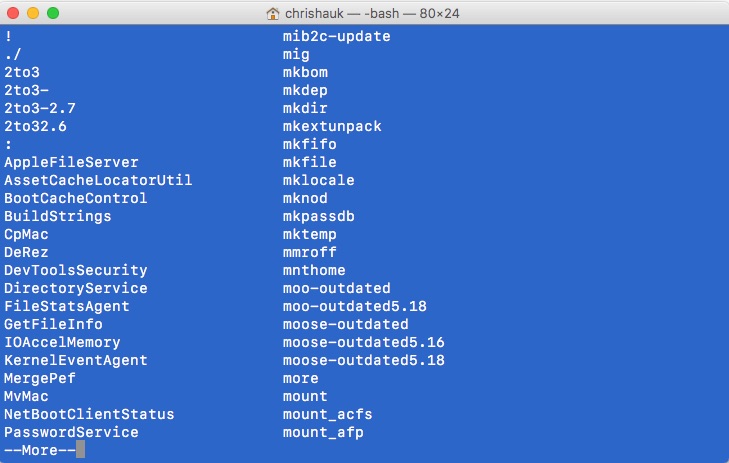

- Cool commands for terminal mac install#
- Cool commands for terminal mac full#
- Cool commands for terminal mac windows#
Using “-c” switch will get the total size of the directory including the subdirectories printed at the last line. To check the total space occupied by a directory, use the “-s” option with the du command. To print in bytes, kilo bytes, mega or Gigabytes, use the “-h” option with du command.Ģ. It displays the output in the form of disk blocks. If you wish to check the disk usage of a folder and its subfolder, then run the following command. It’s one of the standard Linux commands to retrieve the disk usage of files and folders.ġ. Terminal Commands To Check Disk/File Usage. Sort “ps” output by memory usage, from high to low.
Cool commands for terminal mac full#
Modify top command to print the absolute path in its output.Īfter running top, press “c” to display the processes with full path and arguments.Ĥ. You can enter the PID of your choice and provide 15 as the signal value. It’ll prompt you for the process ID and ask for the signal to kill. Kill a process while running the top command. USER PID %CPU %MEM VSZ RSS TTY STAT START TIME COMMAND Print the top 10 processes consuming a lot of memory.

Additional Linux commands to isolate memory issues.ġ. The top header in its output shows the CPU usage, RAM and swap statistics. And it provides several other options and details along with displaying the memory usage. For example, press “a” letter to sort process with PID (Process ID). Press (Shift+O) to select a column via field letter. Most of the time, you can verify the process consuming resources by looking at the or the columns in the top output. Then, you should use top command to determine the process responsible. If you are in a situation, where the memory usage is between 90-100%. But you need not be a root user to run this command. It reverts with the memory usage in the same way as the command does. You need root or access to run this command. The “-m” option returns the usage data in MB format.Īnother way to quickly check the memory consumption is by printing the command. It’s the most frequently used command to track memory usage on Linux. Terminal Commands To Check System Memory. 50+ Terminal Commands – Linux/OS X Users.ġ. Miscellaneous Commands for Quick Reference. Commands To Configure Terminal & Screen.Ħ.

Commands To Check on Running Processes.ĥ. Here is the table of content for quickly browsing through the terminal commands.ģ. If you face problems while installing it, try adding the Terminator repository to your system first.☛ Recommended – 30 Linux Questions With Answers – Online Test.
Cool commands for terminal mac install#
To install Terminator on Debian-based distros, type the following command: sudo apt-get install terminator Terminator also lets you share your preferences as a template in the form of “profiles”. You can change the background and foreground text color, fonts, custom layouts, and much more as a part of customization. Related: The Best Alternatives to the Terminal App for Ubuntu For customization, the settings come under the common Preferences dialog box. Along with support for multiple tabs., the multi-grid structure allows users to arrange the tabs in both vertical and horizontal modes.
Cool commands for terminal mac windows#
It lets you manage multiple tasks with ease while rearranging the terminal windows at the same time. And if you are a multitasker, this terminal emulator is a no-brainer for you. Terminator is built on top of GNOME to make the workflow easier for multitaskers. Coming to the aesthetics, you can never go wrong with Terminator.


 0 kommentar(er)
0 kommentar(er)
